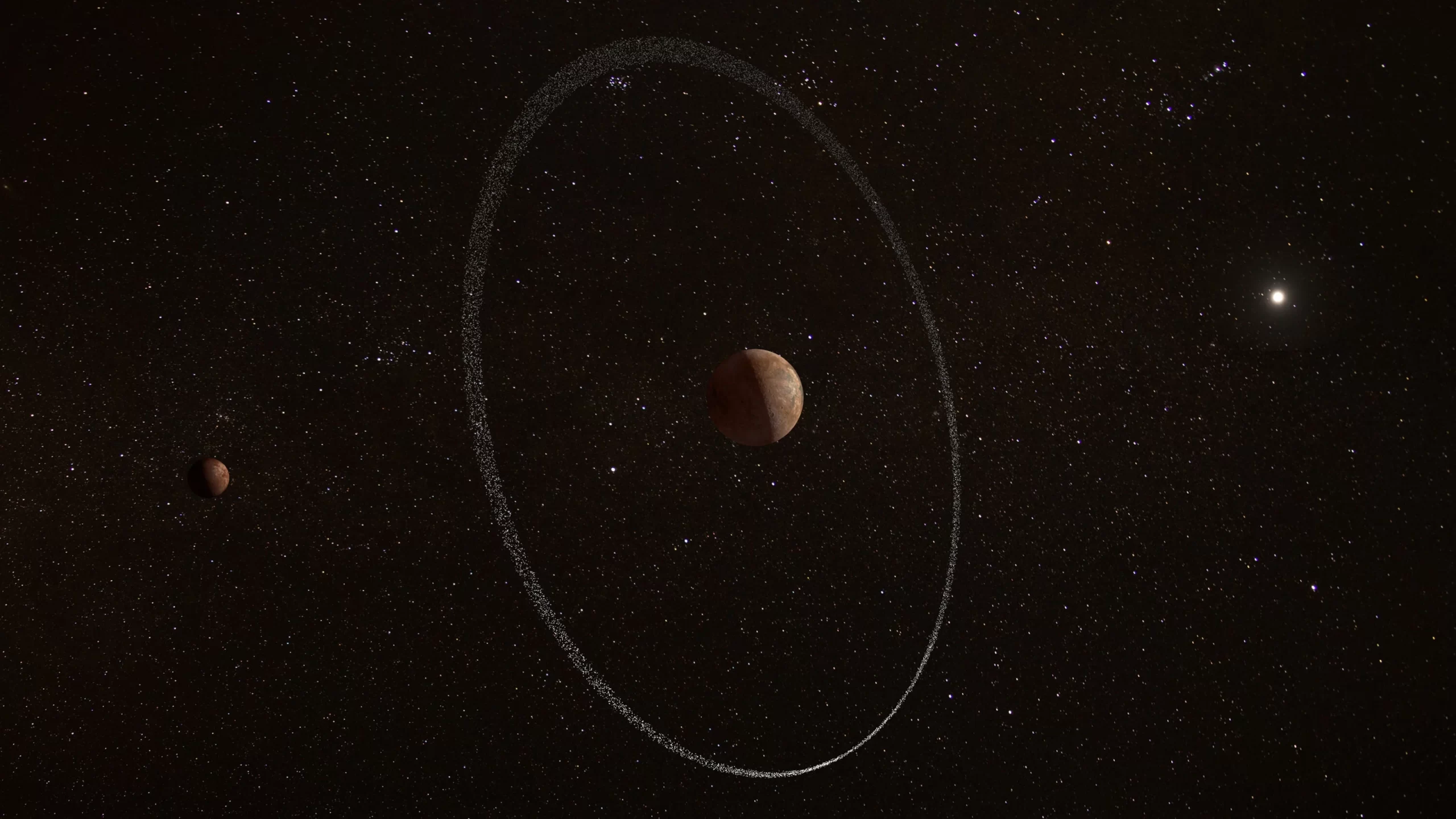A recent study published in the journal Nature has made a groundbreaking discovery: a ring around the dwarf planet Quaoar that is located in the Kuiper Belt, the far reaches of our solar system. While the existence of planetary rings is not new, the unusual placement of this one has left astronomers puzzled.
The Research and Its Findings
Bruno Morgado of the Federal University of Rio de Janeiro and Bruno Sicardy of the Paris Observatory, along with other researchers, recently conducted a three-year study from 2018 to 2021. Their study, titled ‘A dense ring of the trans-Neptunian object Quaoar outside its Roche limit,’ used the phenomenon of stellar occultation to observe Quaoar and make a significant discovery. By observing the shadow of eclipses when Quaoar passed in front of four stars, they discovered a ring around the planet.
The researchers reported that the ring around Quaoar had a radius of 555 km and was located approximately 1,400 miles beyond the Roche limit. Quaoar, which is about half the size of Pluto and has a moon named Weywot, served as the subject of the study.
- The Roche limit is the minimum distance at which a celestial body can orbit a planet without disintegrating due to tidal forces. It exists between any planet and the celestial bodies around it. For example, Saturn’s rings exist within the Roche limit, and there are no moons in that area. The Roche limit was discovered by French astronomer Édouard Roche in 1848.
Possible Explanations for Quaoar’s Ring
The distance between Quaoar and its ring is the most intriguing part of the discovery. At such a distance, the ring’s particles should have coalesced into a moon. However, the researchers have not been able to explain how the ring has managed to remain stable at such a distance from the Roche limit.
- One possible explanation could be that the particles of the ring are colliding with each other in such a way that they are avoiding coalescing into a moon. Another explanation could be that Quaoar’s moon, Weywot, or some other unseen moon contributes gravity that holds the ring stable.
Conclusion
The discovery of a ring around Quaoar at an unexpected distance from the Roche limit has raised more questions than answers. While the study’s findings are intriguing, there is still much to learn about the phenomenon. Astronomers are excited about the possibility of discovering more rings around smaller planets in the outer solar system. This discovery may expand our understanding of planetary ring systems and force us to rethink the laws governing them.

1 thought on “Ring around Dwarf Planet Quaoar: A Strange Anomaly That Defies Explanation”